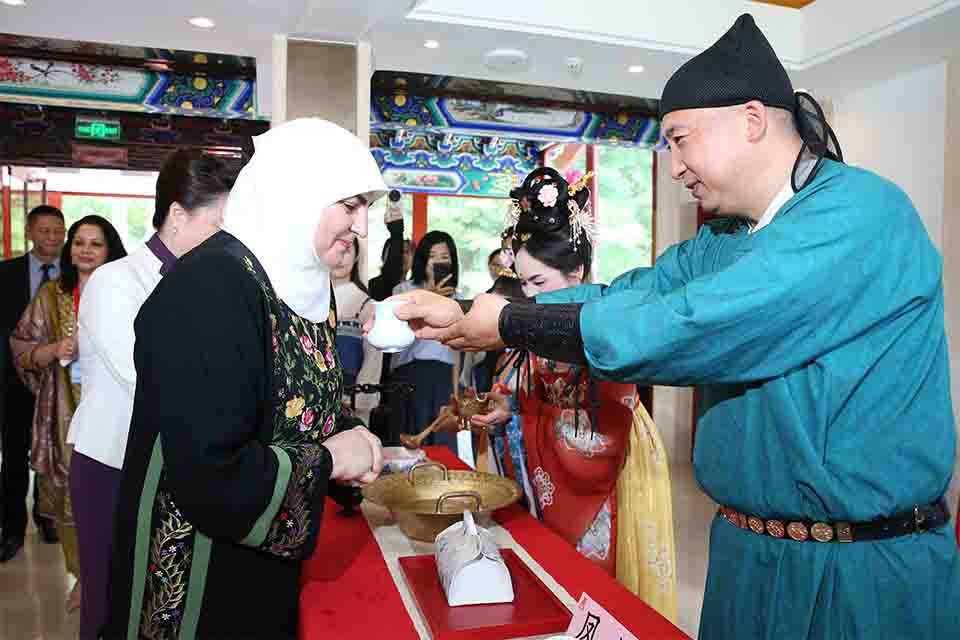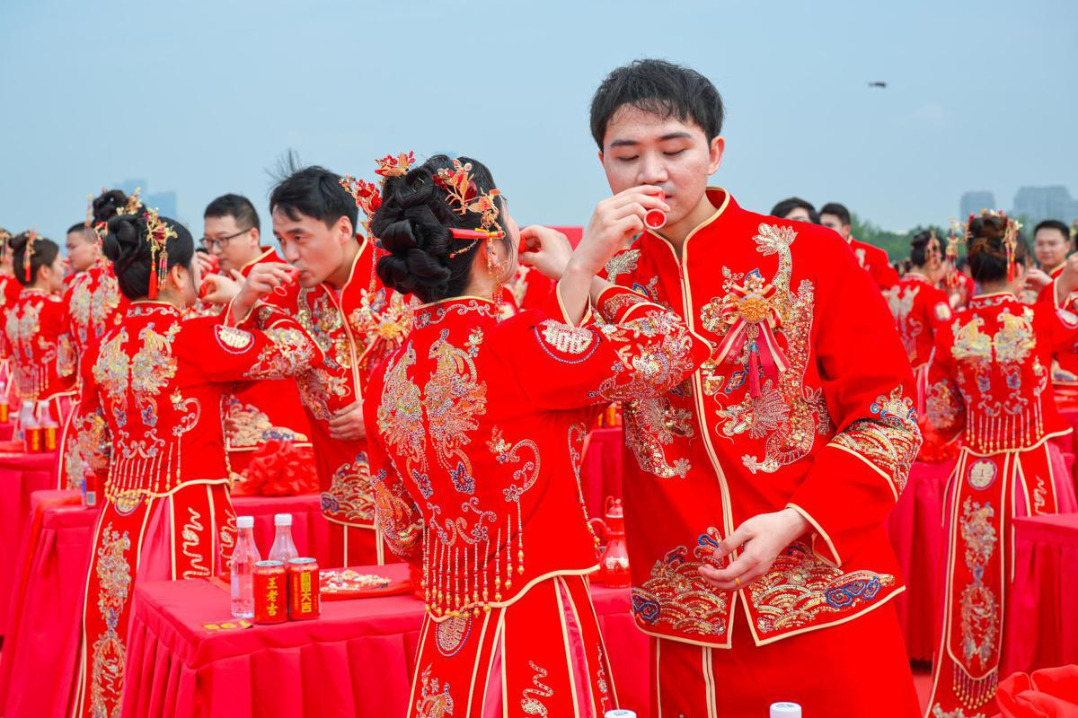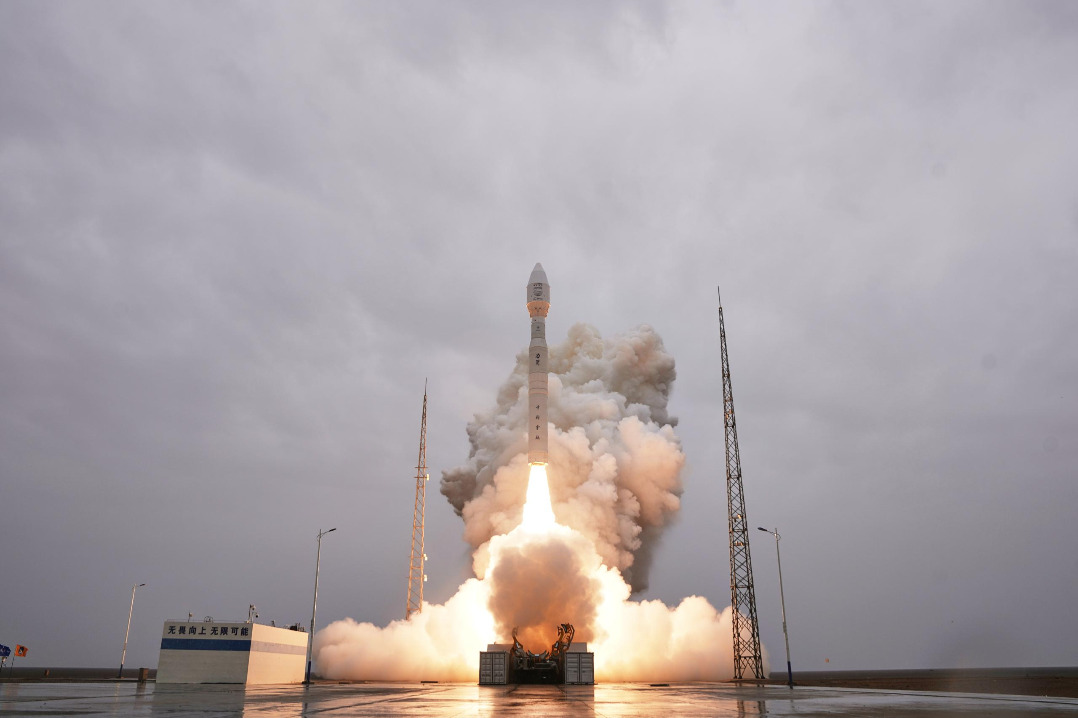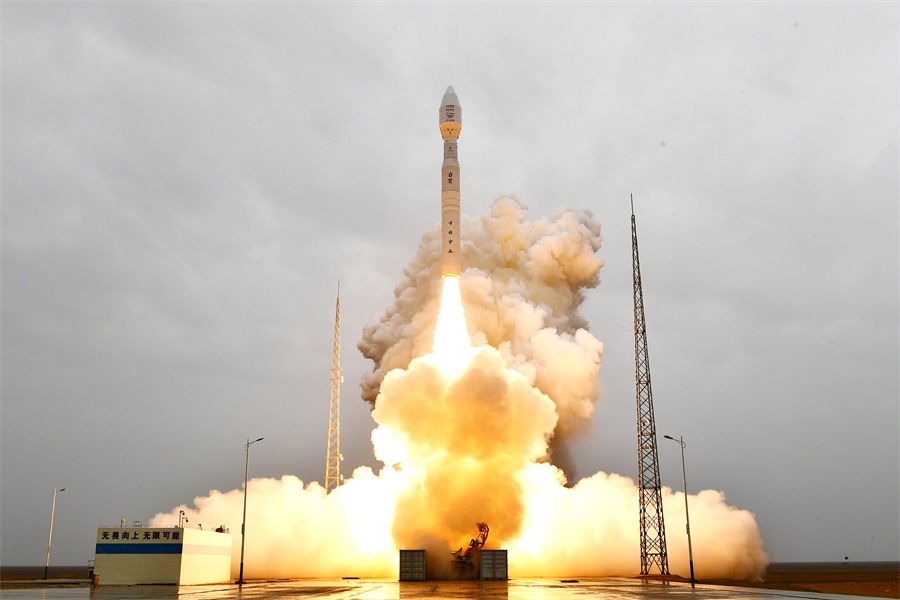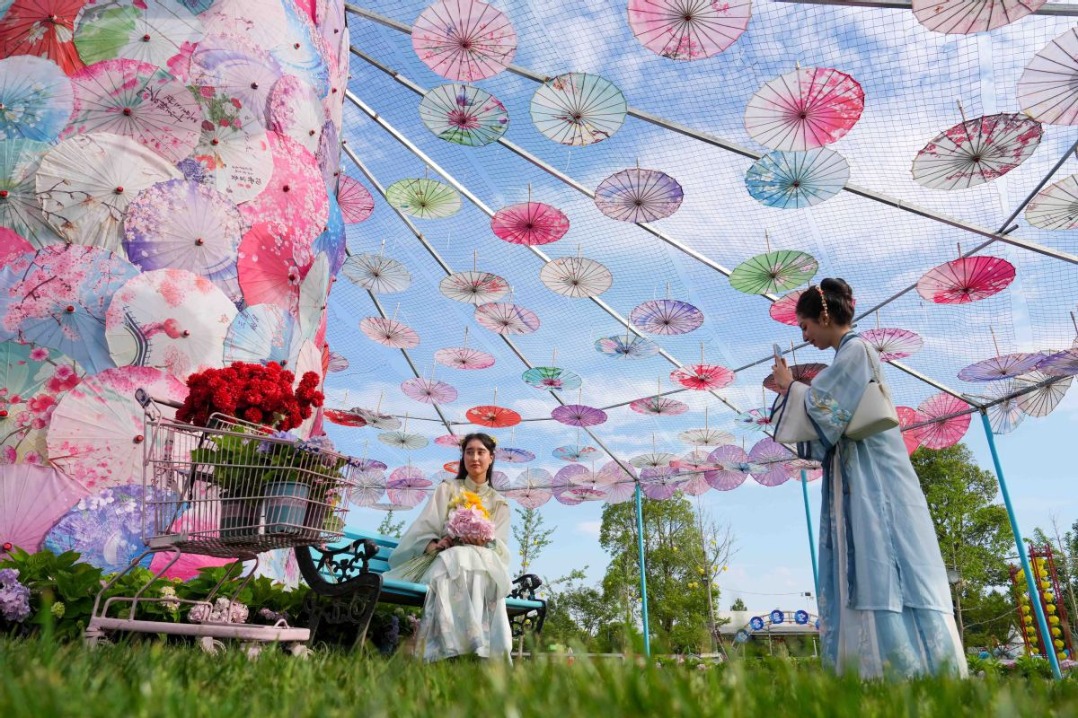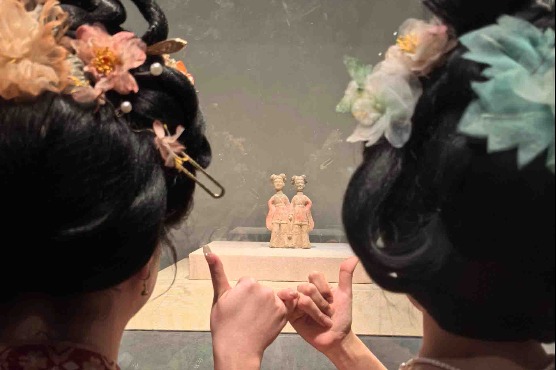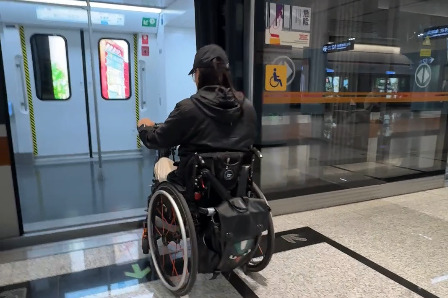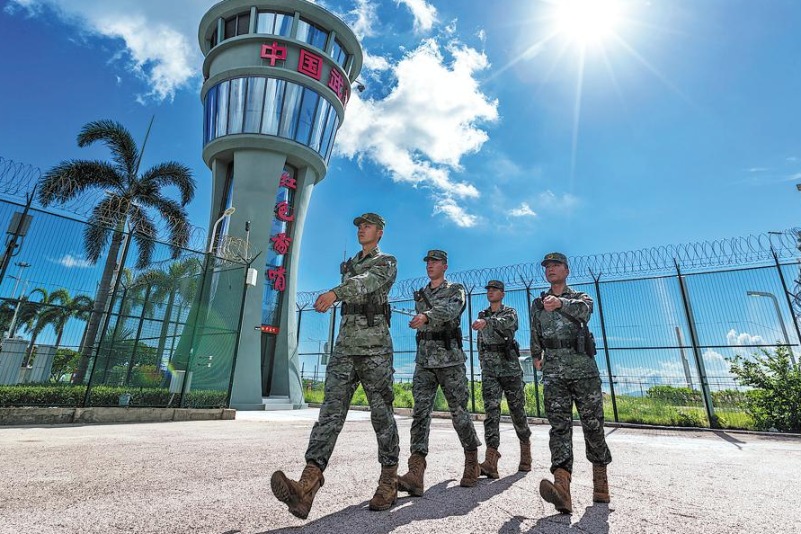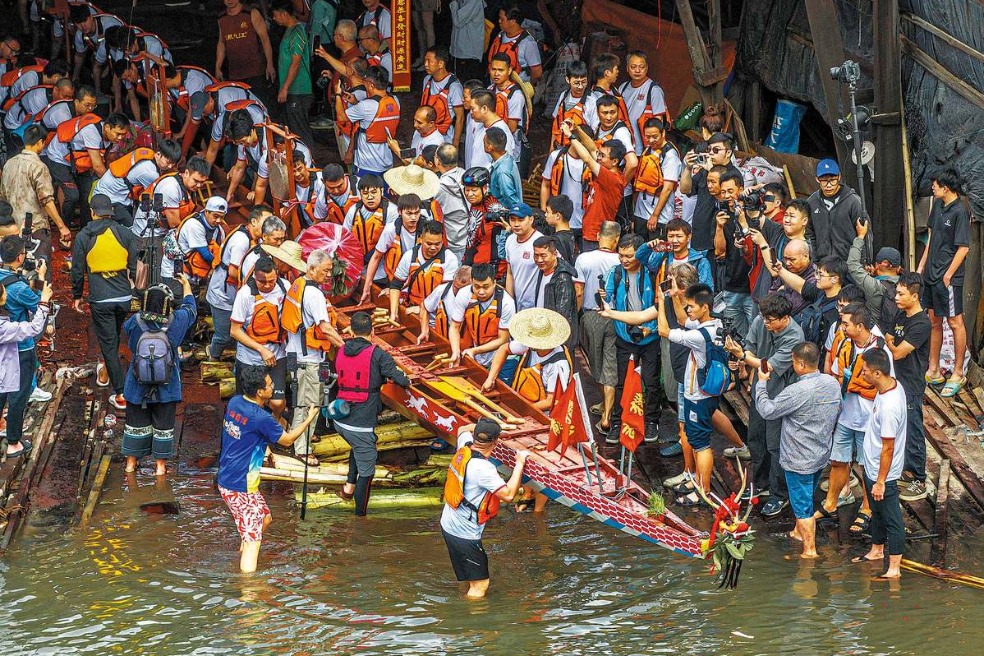Xi stresses heritage protection
Digital technology helps to preserve historical legacy at Longmen Grottoes

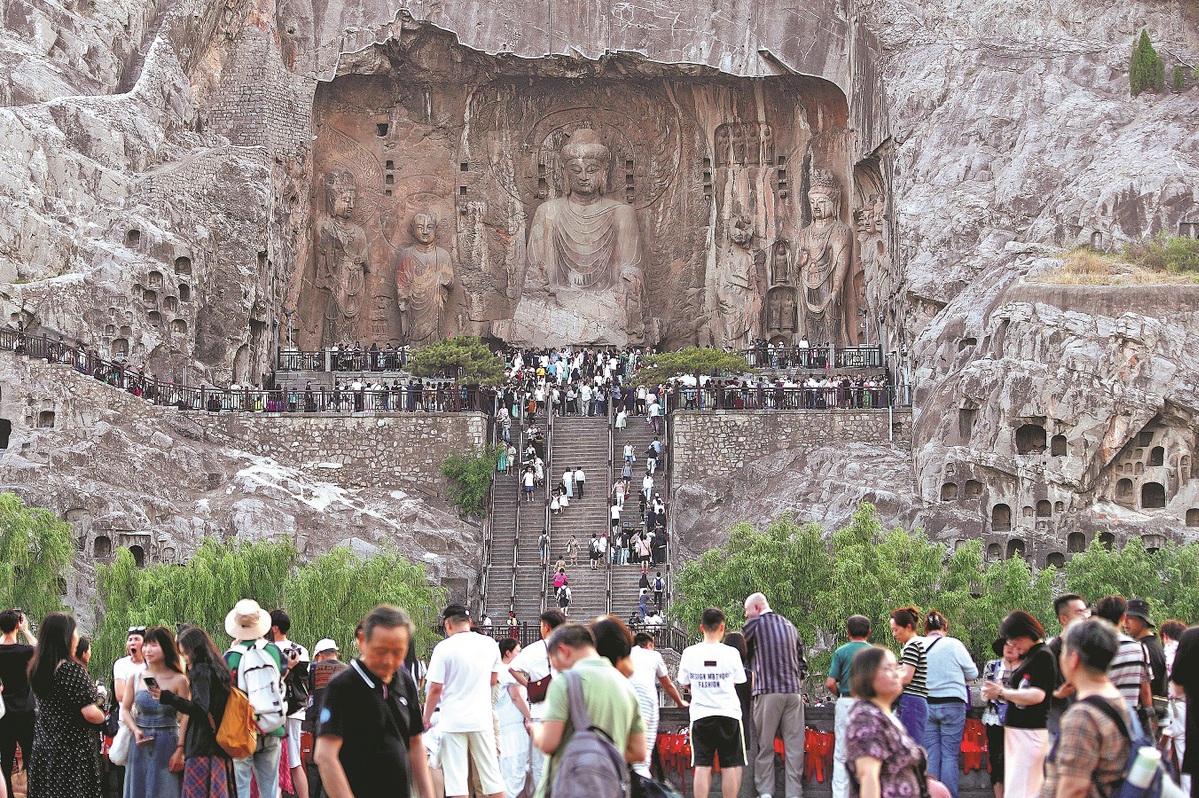
When President Xi Jinping ascended the steps to Guyang Cave, the oldest cave at the Longmen Grottoes in Luoyang, Henan province, on Monday afternoon, Gu Hongyao and his colleagues from the Longmen Grottoes Research Institute were documenting the site.
Gu is responsible for archaeological surveying, which requires him to document every detail within the cave, to ensure its better protection.
President Xi was very concerned about the instability of rock formations in stone cultural relics and made detailed inquiries on issues such as water infiltration, weathering and microbial damage, according to Gu and his colleagues.
"He asked us to protect, inherit and promote these treasures of Chinese culture. I believe that the reason these cliffside treasures are so precious is not only because they carry a long-standing cultural legacy, but also because they are a testament to the craftsmanship and spirit of the artisans," Gu said.
When Gu joined the institute 20 years ago, the work was time-consuming and labor-intensive because the archaeologists could only rely on their own hands, a pen and a piece of paper.
Nowadays, the work efficiency of surveying has been greatly enhanced as 3D digital technologies can help produce the preliminary drawings. In addition, 3D printing is used to create eaves for the niches to prevent rainwater from directly eroding the statues, and ground-penetrating radar detection is used to accurately locate cracks and water seepage.
"We are trying every means to preserve the legacy of Chinese civilization for as long as possible," he said.
First built in AD 493, the Longmen Grottoes comprise more than 2,300 caves and niches carved into the steep limestone cliffs over a 1-kilometer-long stretch. Standing as a testament to the artistic and cultural zenith of ancient China, the site was inscribed on the UNESCO World Heritage List in 2000.
Ma Chaolong, who joined the institute in 1997, called himself "an attending physician" for the cultural relics. Ma said what he does is to monitor the "health status" of the grottoes, treat any issues and prevent potential ones, aiming to slow down the rate of erosion as much as possible.
Ma said that through the interaction with Xi, "we could clearly feel the great importance he attaches to the preservation of cultural relics, especially that of grottoes".
As part of Xi's two-day fact-finding trip to Henan province, Yu Jie, Party secretary of the Longmen Grottoes Research Institute, accompanied the president on a tour of the site, one of China's four major grotto sites.
The other three are the Mogao Grottoes in Dunhuang, Gansu province; the Yungang Grottoes in Datong, Shanxi province; and the Maijishan Grottoes in Tianshui, Gansu.
Yu said he told Xi that the stone carvings from Guyang Cave provide invaluable historical materials for the study of Buddhist architecture and carving art, as well as music, dance, clothing and cultural exchanges in ancient times.
After inspecting the overall layout and appearance of the grottoes, as well as the representative niches and statues, Xi emphasized the need to protect, inherit and promote the country's cultural treasures.
According to Yu, the preservation of cultural heritage has entered a new era, shifting from rescue-based protection to preventive protection.
It is essential now to leverage the power of technology and incorporate new materials and techniques into the preservation of cultural heritage in order to make it more precise and effective, Yu said.
China's vast landscape is home to nearly 6,000 cave temples, and Xi said that the nation's major grottoes are "treasures of Chinese civilization" with significant historical and cultural value.
Since 2012, Xi has visited multiple provincial-level regions rich in cultural heritage for inspections, issued more than 170 important directives on cultural relics, archaeology and intangible cultural heritage, and conducted on-site investigations of over 100 historical and cultural heritage sites. He has paid visits to all of China's four major grotto sites.
- Xi stresses heritage protection
- Record-low rainfall triggers early diversion projects in Gansu
- Zhejiang offers subsidies for smart device purchases
- Beijing court praised for arbitration efforts
- Tea Day event brews global cultural exchange in Beijing
- Sichuan official faces probe for suspected discipline and law violations
















